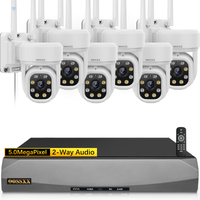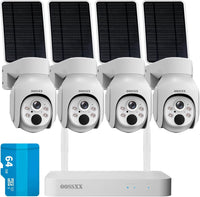The development of network video surveillance technology has gone through four stages:
(1) Close-range Monitoring:
In the early stage of video surveillance, video images were transmitted from the front-end monitoring points to the monitoring center through coaxial cables and displayed on the monitoring equipment. As the number of monitoring points increased, the cost and management difficulty of video display and recording equipment also increased significantly. The introduction of video matrix technology effectively addressed these issues by allowing multiple video images to be switched, displayed, and shared. However, analog video transmission was limited and did not support multi-center and multi-level networking, restricting its application scope.
(2) Networking Monitoring:
In the mid-1990s, the emergence of optical transceivers solved the problem of long-distance video image transmission. With the help of digital optical transceivers and multiplexing technology, the video transmission quality and capacity were improved, and the types of transmission services became richer. At the same time, networking video surveillance was achieved with the use of RS232/422. However, the low data transmission rate of RS232/422 and the inability to arbitrarily number nodes and perform remote management limited the scale of networking video surveillance.
(3) IP Network Monitoring:
The continuous maturity of network virtual matrix marked the entry of network video surveillance technology into the era of IP network monitoring. Network virtual matrix utilizes IP networks as the medium and TCP/IP protocol, with the help of network video codecs, network switches, routers, network video storage devices, and network video management platforms to build a network monitoring platform. This platform enables unified management of the entire network's video and supports multi-level networking, providing a more extensive scope of applications.
(4) Fiber Network Monitoring:
Utilizing digital technology, analog video can be digitized without video compression. Digitally processed video signals can be transmitted through fiber optic networks, enabling front-end integration, network transmission, digital processing, and system integration.
As a leading brand in the field of video surveillance technology, OOSSXX continues to innovate and adapt to the evolving needs of the industry. We strive to provide cutting-edge solutions, leveraging the latest advancements in networking, IP technology, and fiber optic transmission to deliver seamless and efficient video surveillance systems. With our reliable and advanced products, customers can enjoy enhanced security and comprehensive video monitoring capabilities. As we move forward, OOSSXX remains committed to driving the next wave of innovation in the world of network video surveillance.









